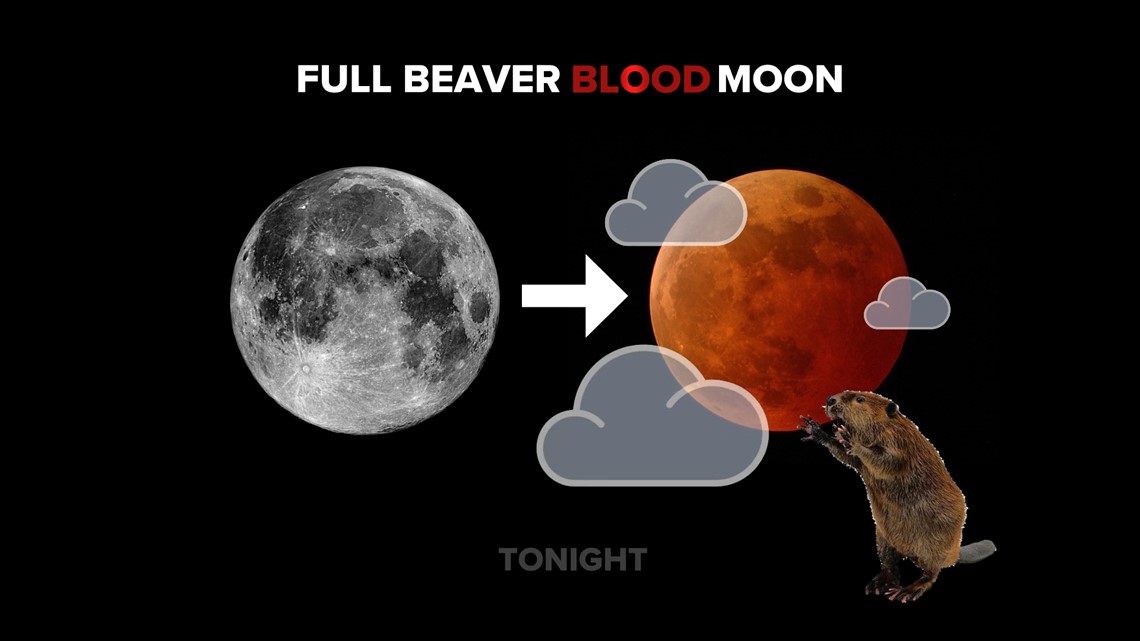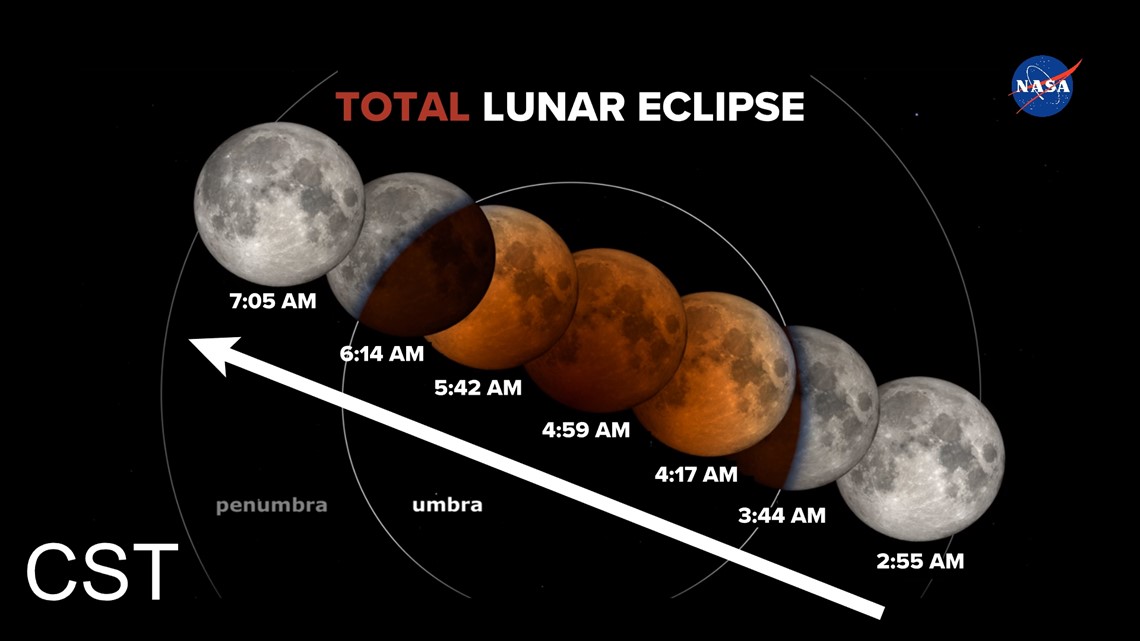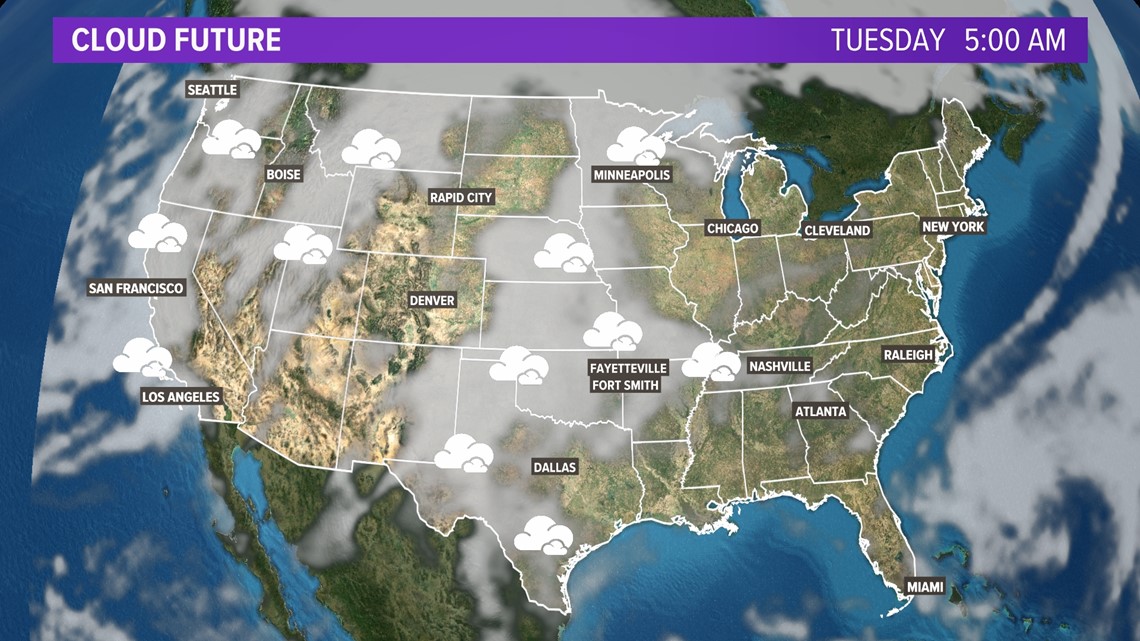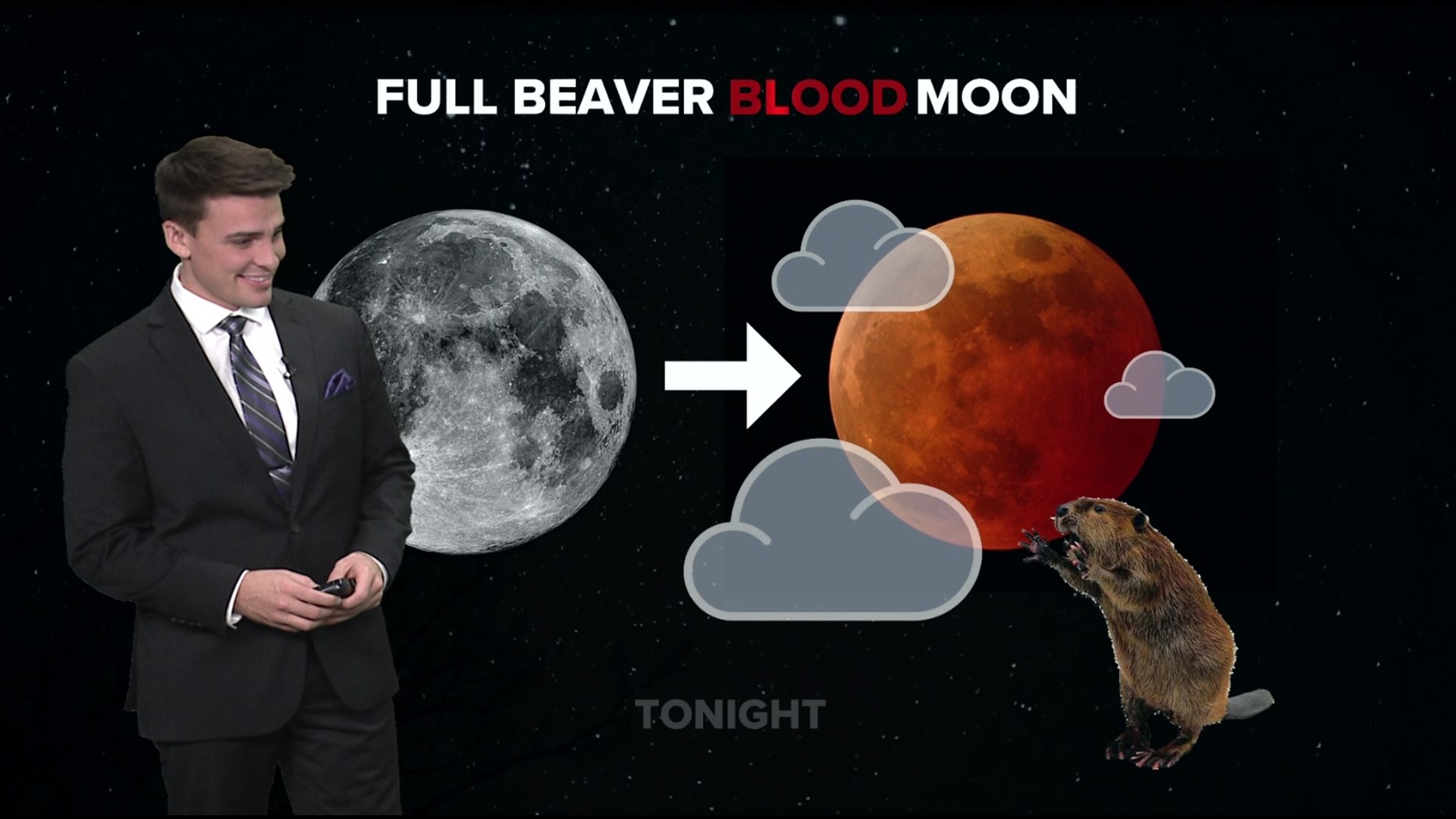ARKANSAS, USA — Tonight is the night of the Beaver... The full beaver moon will rise and be eclipsed across most of North America and the Pacific Ocean as the earth passes between the sun and the moon, blocking the sunlight from reaching the lunar surface.
Tap HERE to track clouds with our interactive satellite.
BEAVER BLOOD MOON
Why is it called the Beaver Moon? Generally in the northeastern United States, November marks the time of year when beavers finish up collecting food and nestle into the dams they have been working on throughout the fall and summer. They do not hibernate. Instead all winter-long they slowly eat the food they stored up. Essentially it marks the start of the cold season for many in the northern U.S. and southern Canada.


WHEN IS THE TOTAL LUNAR ECLIPSE?
Across North America, the eclipse will take place in the early morning. Some areas near the Atlantic Ocean may start to get sunrise before the eclipse finishes, diminishing the view. The central and western U.S. will have great timing as the night sky should remain dark during the lunar eclipse.
The times listed are in central time. Peak eclipse should take place close to 5 AM CST across the western hemisphere. Places farther west and into the Pacific will see the eclipse closer to midnight local time.


WILL CLOUDS GET IN THE WAY?
There is a warm front in the Plains and a cold front in the western U.S. These fronts are helping produce a lot of clouds for the western two-thirds of the nation. There may be a couple breaks in the clouds looking in the eastern sky where the moon will set just after the lunar eclipse.
Western Arkansas: mostly cloudy (few breaks in the sky)
Eastern Arkansas: mostly clear to partly cloudy
Oklahoma: mostly cloudy state-wide


-5NEWS Weather

